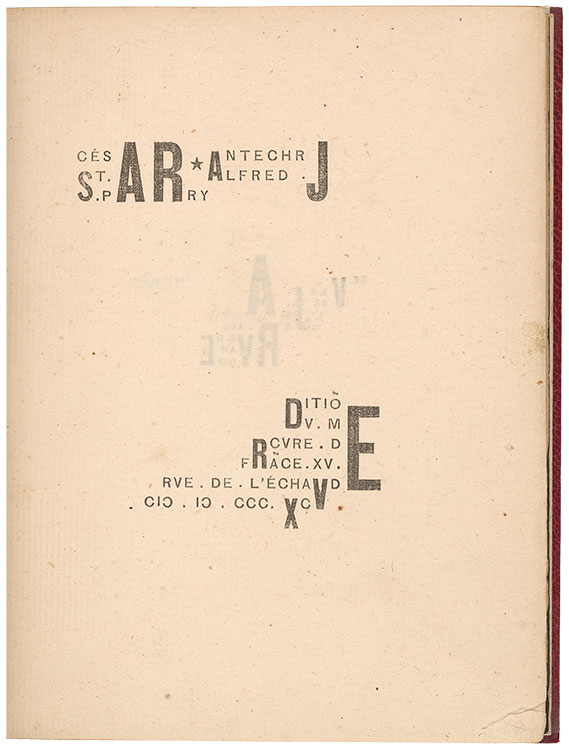
Now, I had in my hands—since when?—a book—certainly written by me; how and when? no memory— where all that I was to see, all that I was to think afterwards, was foretold. . . . And the letters were pictures.
—Alfred Jarry, “Opium” (1893)
Jarry privileged painting over writing. Images, he argued, can be perceived all at once, whereas writing is sequential and thus constrained by duration. This title-page design defies the linearity of reading, however, presenting itself as both image and information. Some letters operate in multiple words; others are unstable (a J can be an I or a Y). Jarry’s use of medieval tildes (as in Frãce for France) requires the reader to complete the words.
Alfred Jarry (1873–1907), César-antechrist (Paris: Mercure de France, 1895). The Morgan Library & Museum, gift of Robert J. and Linda Klieger Stillman, 2017. PML 197018.
